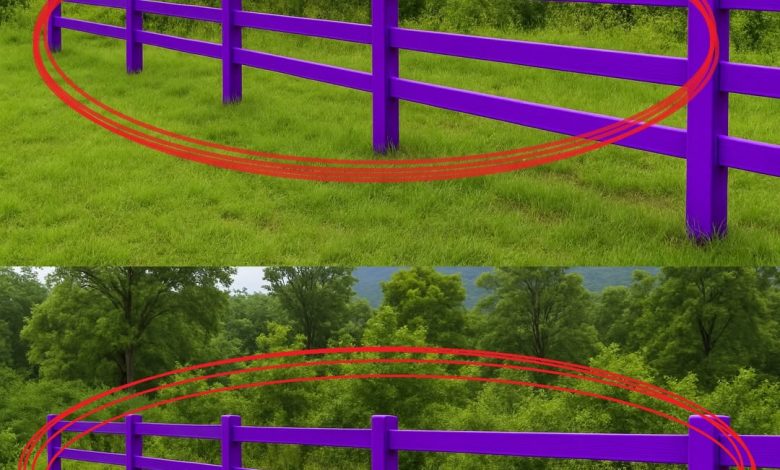If You Spot a Painted Purple Fence, This Is What It Means

The practice may sound strange, but it’s actually backed by law in several U.S. states. Instead of putting up dozens of “Keep Out” signs that can fade, fall, or get stolen, property owners use purple paint as a clear, durable warning. It’s a legal substitute for signage in many rural and wooded areas — especially where hunters, hikers, or wanderers might cross private land without realizing it.
ADVERTISEMENT
But there’s a right and wrong way to do it. Purple markings have to follow specific rules to count legally. The paint must be applied in vertical lines, not random smudges or horizontal streaks. These stripes need to be at least one inch wide and eight inches long, so they’re visible from a reasonable distance. The marks should sit three to five feet off the ground — low enough to catch someone’s eye, but high enough not to be hidden by tall grass or brush.
ADVERTISEMENT
Spacing also matters. Landowners are required to place the purple marks roughly every hundred feet along their property lines. The goal is to make it impossible for someone to cross the boundary without seeing at least one.
ADVERTISEMENT
However, not every state uses this system. Some recognize it under “Purple Paint Laws,” others don’t. States like Texas, Illinois, North Carolina, and Missouri legally honor the markings as a substitute for “No Trespassing” signs. But in other regions, painting your fence purple might just look eccentric unless the law explicitly supports it. Always check your local or county regulations before picking up a brush.
So, why purple? It’s simple: it stands out. The color is unusual in nature and rarely used in everyday fencing, which makes it eye-catching. It’s also more durable than traditional signs — paint won’t blow away or fade nearly as fast. A purple mark delivers the same legal weight with far less maintenance and clutter.
If you’re hiking, exploring backroads, or passing through farmland, pay attention. Purple paint on fence posts or trees isn’t decoration — it’s a boundary. It says, “This is private property. Do not enter.” In some areas, ignoring it could mean trespassing charges.
So next time you see that unmistakable streak of violet or plum on a fence or tree trunk, you’ll know it’s not random art. It’s a quiet but firm message from the property owner. A single stripe of color that says more than any sign: stop here, you’ve gone far enough.




